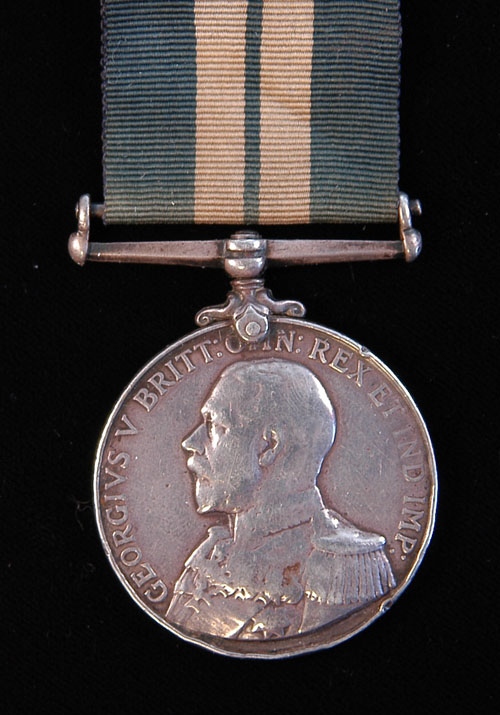
Auction: 6007 - Orders, Decorations, Campaign Medals & Militaria
Lot: 426
A Great War ´Zeebrugge´ D.S.M. to Able Seaman F.C. Summerhayes, H.M.S. Vindictive, Who Was Wounded in the Raid, And Participated in the Ballot for Victoria Cross Awarded to Captain A.F.B. Carpenter V.C., R.N. Distinguished Service Medal, G.V.R. (J.17594 F.C. Summerhayes, A.B. Nl. Bde. Zeebrugge Ostend. 22-3. Apl. 1918.), worn, fine, with Zeebrugge 1918 commemorative badge, reverse numbered ´716´; several photographs; Certificate of Service; Certificate of Wounds, dated 29.4.1918; copy of the ´Dailly Graphic´, dated 24.4.1925, and other ephemera Estimate £ 450-550D.S.M. London Gazette 23.7.1918 A.B. Frederick Charles Summerhayes, O.N. J17594 (Dev.) ´Seaman Storming Party "B" Company´ On the 23rd of April 1918, St. George´s Day, the joint operations on Zeebruge and Ostend harbours were carried out by the Royal Navy and the 4th Royal Marines. Their aim being to block the Bruge ship canal at its entrance, Zeebrugge harbour, and to block the entrance to the Ostend harbour by sea whilst inflicting as much damage as possible on the respective ports and ultimately nullify their use as bases for German torpedo craft and submarines. H.M.S. Vindictive´s role was to arrive alongside the the Zeebrugge Mole and unload it´s storming party, thus acting as a diversion for the main objective-the blocking ships. The storming party´s role was primarily to capture the 4.1-inch battery at the sea end of the Mole, which if left intact would be a major threat to advance of the blockships. The vessels charged with providing a smoke screen began shelling at 11.40pm, and the Vindictive simultaneously began her advance on the Mole, ´They literally poured projectiles into us. In about five minutes we had reached the Mole, but not before the ship had suffered a great amount of damage to both material and personnel´. (The Great War....I Was There, Article by Capatin A.F.B. Carpenter V.C., R.N. refers) At 12.01am the Vindictive reached her station closely followed by H.M.S. Daffodil and H.M.S. Iris II. The storming and demolition parties, of which Summerhayes was a member, disembarked and began their work on the Mole made all the more difficult by their losses prior to arriving, ´Captain Halahan, commanding the naval storming forces, who repeatedly told me this was to his last fight, was shot down and killed at the outset. Commander Edwards, standing near him on the gangway deck, was also shot down and completely incapacitated. Colonel Elliot, commanding the Marine storming forces, and his second-in-command, Major Cordner, were killed on the bridge....Many others were killed or wounded. The death of so many brave men was a terrible blow. Nobody knew better than they the tremendous risk attached to their actions; the pity of it was that they should not have lived to see the success for which they were so largely responsible.´ Summerhayes was wounded by shell fire, but managed along with the other survivors, to get back to the Vindictive and be clear of the Mole by 1.15am. The blocking ships at the Zeebrugge end were in position and their task successfully completed by 12.45am. (The Distinguished Service Medal 1914-1920, W.H. Fevyer refers) 176 officers and men were killed in the attack, with 412 wounded. Petty Officer Frederick Charles Summerhayes, D.S.M.; born Bristol, 1897; Able Seaman Royal Navy, 14.5.1912; invalided 21.5.1919; Leading Seaman Royal Naval Volunteer Reserve, 3.1.1923; Petty Officer 14.1.1925; discharged 30.1.1927.
Sold for
£680




